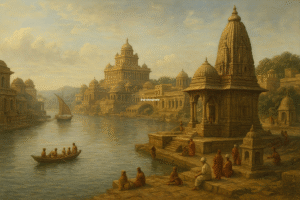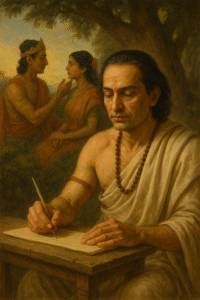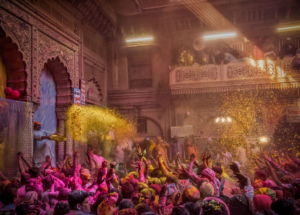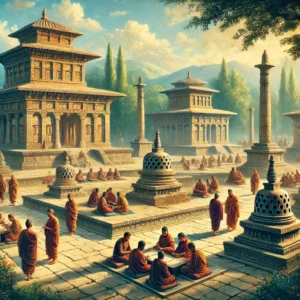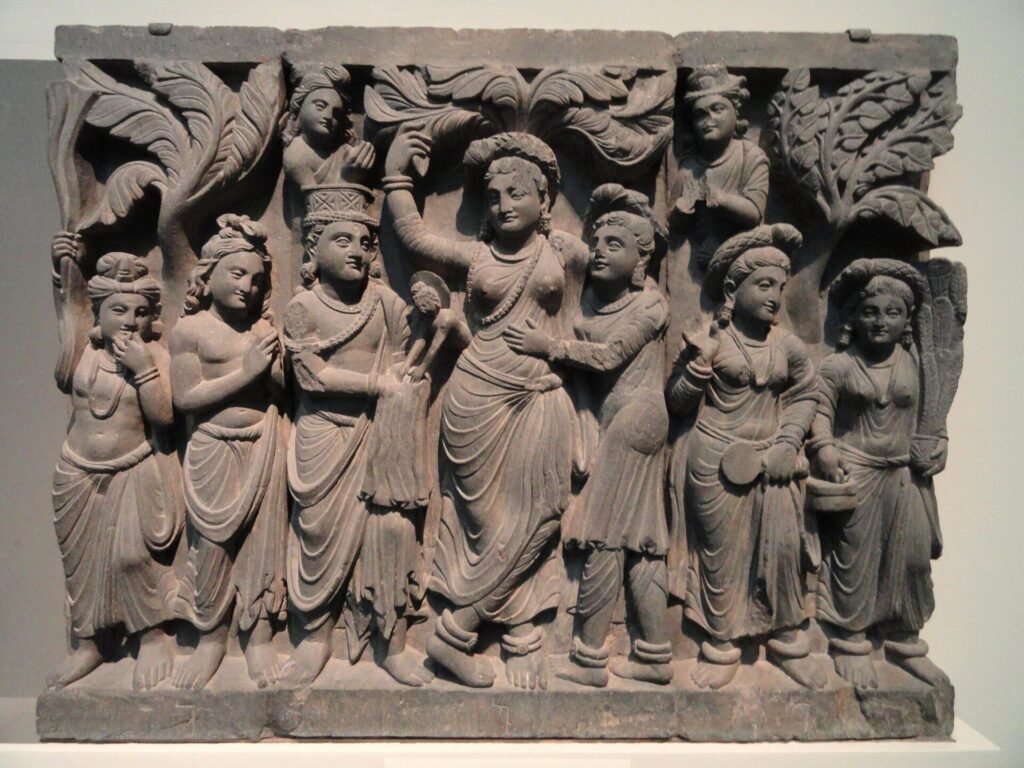
Buddhist Hindu Kingdoms Of Afghanistan
Ancient Afghanistan: A Cultural Melting Pot
Afghanistan has a rich and complex history that stretches back thousands of years. Before the arrival of Islam in the 7th century, this land was home to a multitude of cultures, religions, and empires. Among these were the Hindu kingdoms, which played a crucial role in shaping the early history of the region. The Hindu influence in Afghanistan is a testament to the region’s cultural diversity and its position as a crossroads of civilizations.
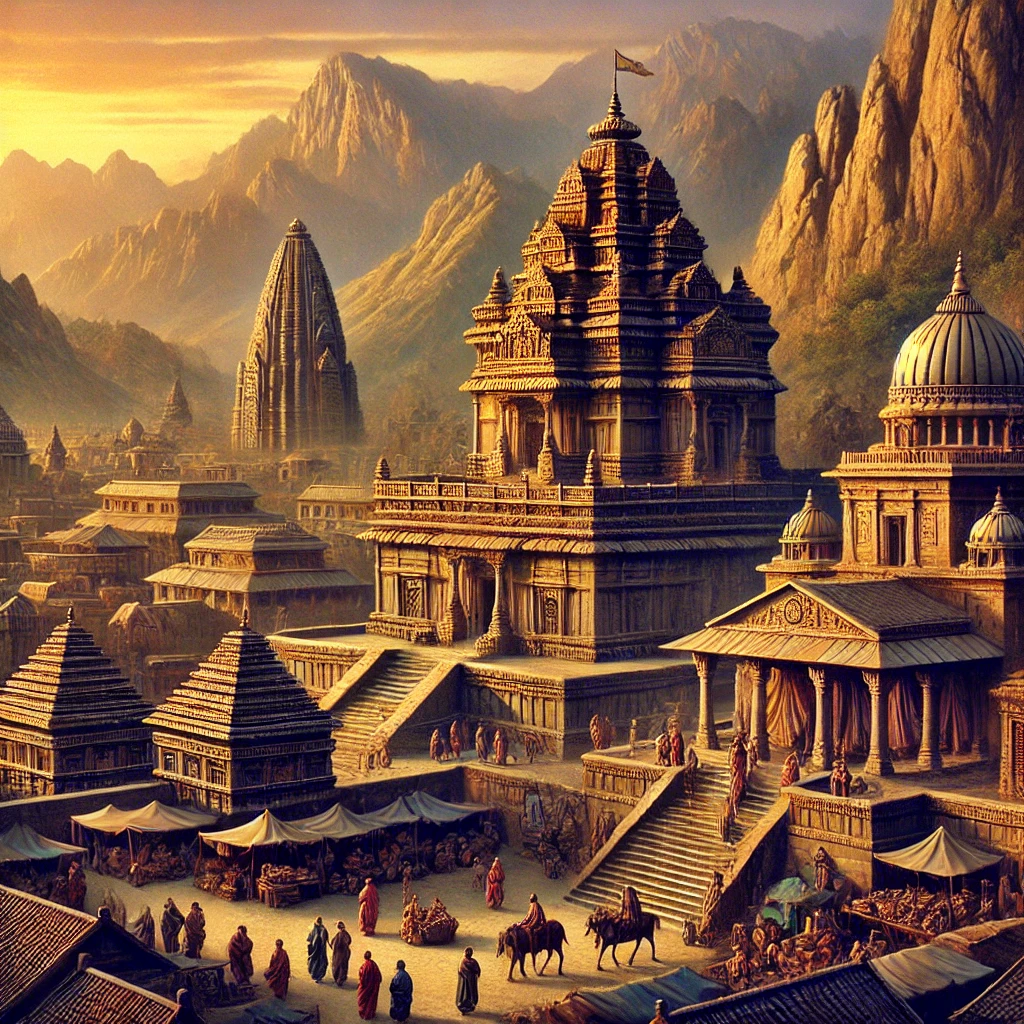
Afghanistan’s strategic location has always made it a pivotal region in the exchange of goods, ideas, and cultures between the East and the West. The region encompasses the Hindu Kush mountains, the fertile valleys of Gandhara, the vast expanses of Bactria, and the rugged terrain of Kamboja. These geographical features not only shaped the development of local civilizations but also influenced their interactions with neighbouring regions.
The Gandhara region, now part of modern-day eastern Afghanistan and northwestern Pakistan, was an early center of Vedic culture. It later became a hub for Buddhist learning and art, particularly during the Kushan Empire. Kamboja, located in the northern parts of Afghanistan, was known for its warrior culture and significant role in early Indian epic literature. Bactria, situated in the northern regions of Afghanistan, was a vibrant center of commerce and culture, heavily influenced by both Indian and Persian traditions.
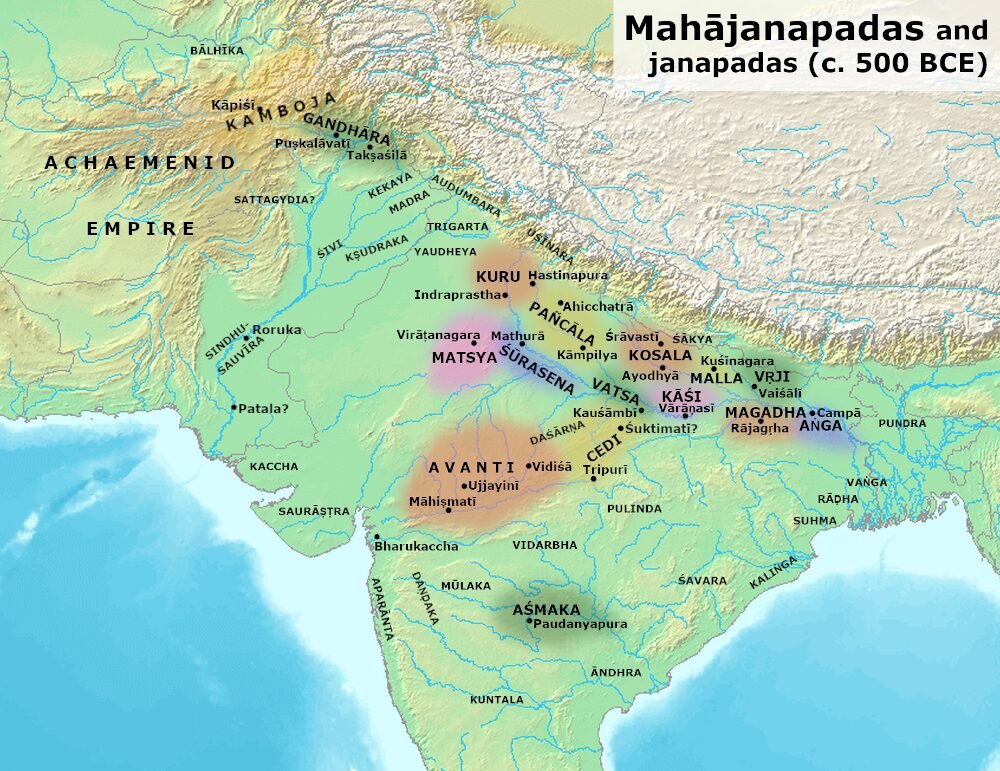
The Rise of Hindu Kingdoms of Afghanistan
The Kambojas: A Warrior Society
The Kambojas were one of the earliest Indo-Iranian tribes to establish themselves in northern Afghanistan and parts of Central Asia. Their society was deeply rooted in Vedic traditions, and they played a significant role in the spread of Hinduism and early Buddhism across the region. The Kambojas were renowned for their cavalry, a feature that made them formidable in warfare and earned them mentions in Indian epics like the Mahabharata.
Kamboja’s influence extended beyond military might; they were also known for their contributions to trade and culture. The region served as a crucial link between the Indian subcontinent and Central Asia, facilitating the exchange of goods, ideas, and religious practices.
The Gandhara Kingdom: A Cultural Beacon
The Gandhara Kingdom, situated in what is now eastern Afghanistan and northwestern Pakistan, was a major center of Vedic culture and later, a thriving hub of Buddhism. Under the rule of various kings, Gandhara flourished as a cultural and economic center. It was during this time that the region became known for its distinctive art and architecture, which blended Indian, Persian, and Greco-Roman influences.
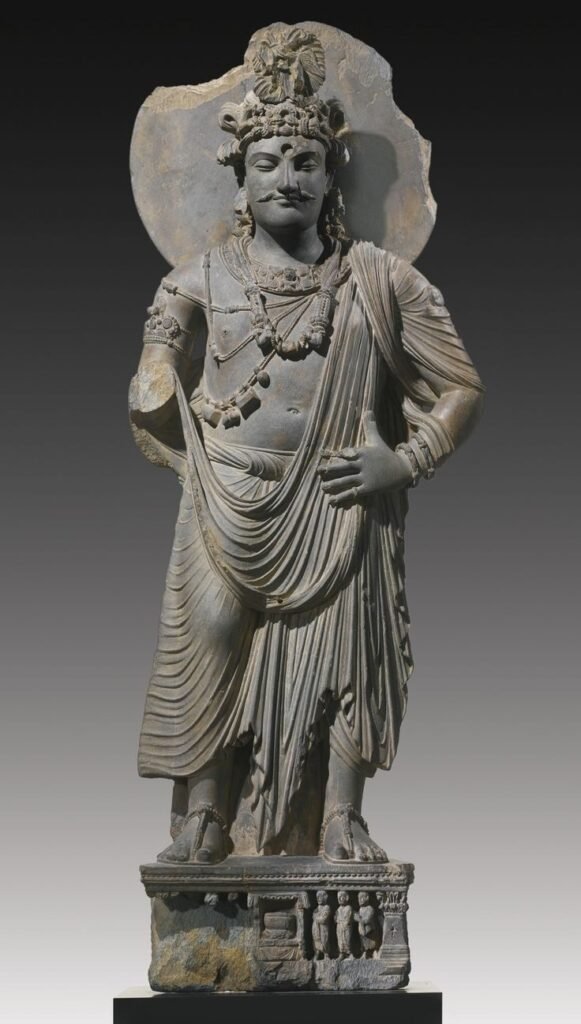
Pushkarasarin, one of the notable rulers of Gandhara, is credited with supporting both Hindu and Buddhist institutions. The region’s strategic location on the Silk Road made it a melting pot of cultures, attracting scholars, artists, and traders from across Asia. The Gandhara School of Art, which emerged during this period, is renowned for its intricate sculptures that depict Hindu deities alongside Buddhist figures.
The Hindu Shahi Dynasty: The Last Bastion of Hindu Rule
The Hindu Shahi dynasty, which ruled from the Kabul Valley to the Punjab region between the 9th and 11th centuries CE, represents one the last significant Hindu kingdoms of Afghanistan. The dynasty is believed to have originated from a Brahmin lineage and was known for its staunch resistance against the early Islamic invasions. Kings like Jayapala and Anandapala are remembered for their efforts to defend their kingdom against the Ghaznavids, although these efforts ultimately proved unsuccessful.
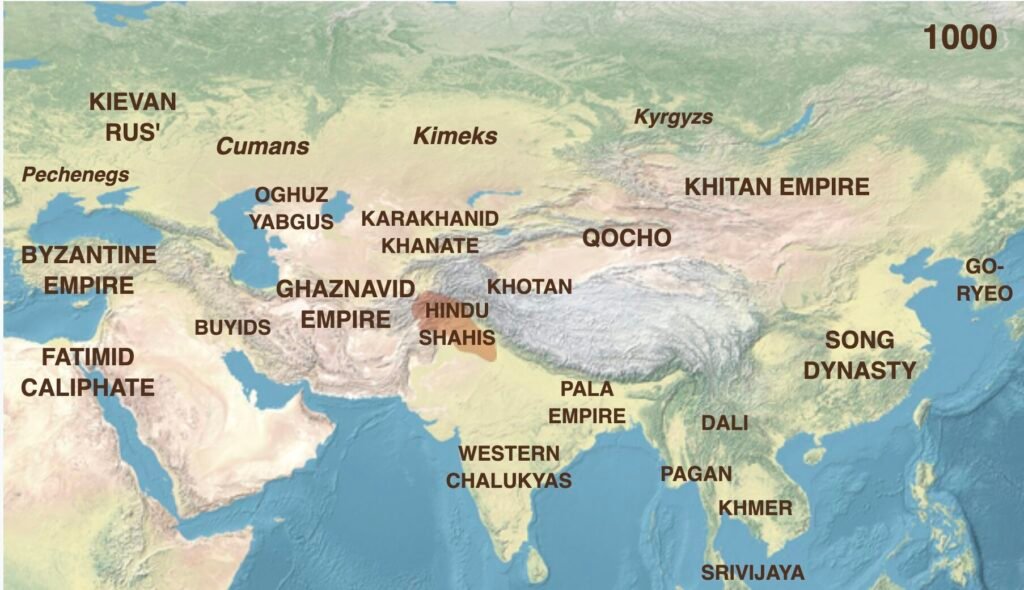
The Shahi rulers were patrons of both Hindu and Buddhist traditions, and their capital cities, particularly Kabul and Peshawar, were centers of cultural and religious activity. Temples, monasteries, and educational institutions thrived under their rule, contributing to the region’s intellectual and spiritual life.
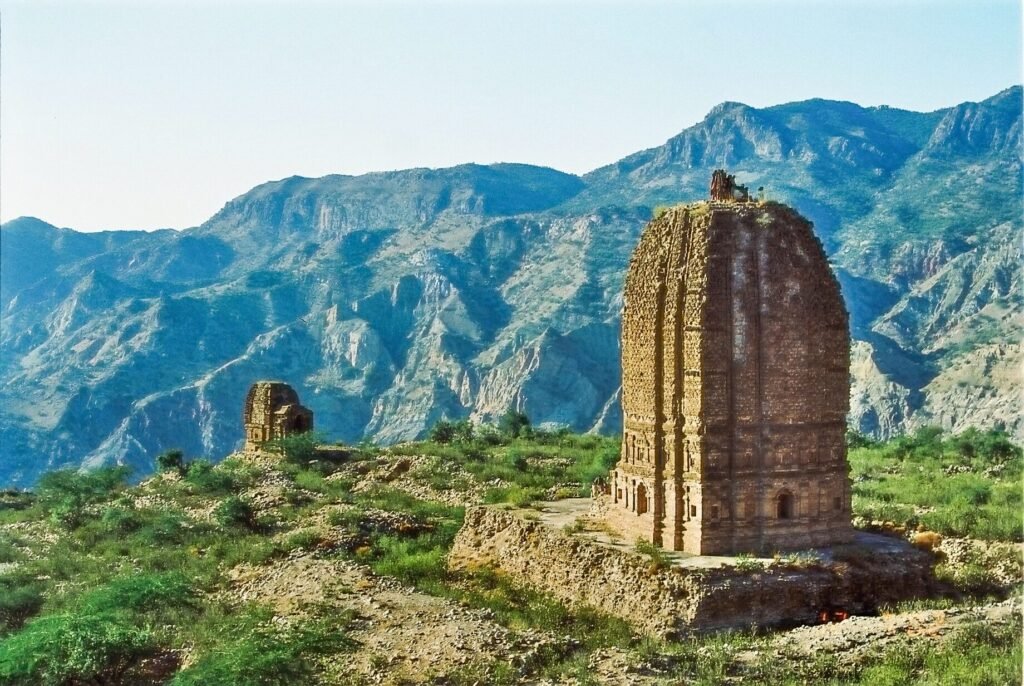
Other Influential Kingdoms and Empires
The Achaemenid Empire (550-330 BCE)
Before the rise of the local Hindu kingdoms, the Achaemenid Empire, based in Persia, extended its influence over parts of modern Afghanistan. The regions known as Arachosia (Kandahar) and Bactria were integrated into the Persian Empire, bringing Zoroastrianism and Persian administrative practices to the area. However, despite the Persian dominance, local Hindu traditions persisted, particularly in the more remote areas of the empire.
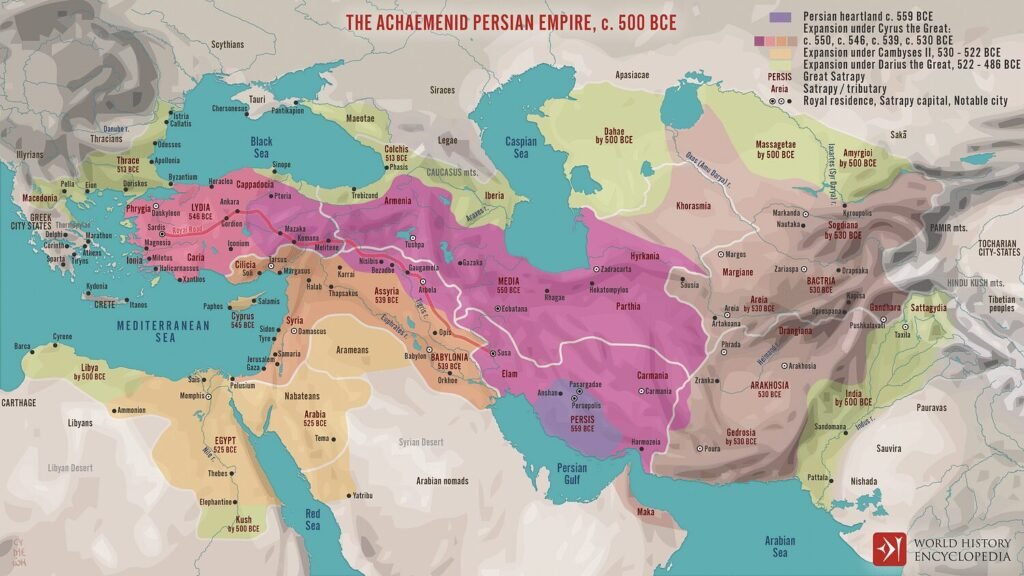
The Maurya Empire (322-185 BCE)
The Maurya Empire, under the leadership of Emperor Chandragupta Maurya, expanded into Afghanistan, particularly the regions of Gandhara and Bactria. This period marked a significant cultural and political shift in the region, as the Mauryan influence introduced new administrative practices, religious ideas, and art forms. Under the reign of Ashoka, Chandragupta’s grandson, Buddhism spread rapidly across the region. Ashoka’s support for Buddhism, however, did not eclipse the presence of Hinduism, which continued to thrive alongside the new faith.

The Kushan Empire (1st to 3rd Century CE)
The Kushan Empire, established by a nomadic tribe from Central Asia, became one of the most influential empires in Afghanistan’s history. Under the rule of King Kanishka, the Kushan Empire expanded its territory across Afghanistan, northern India, and parts of Central Asia.
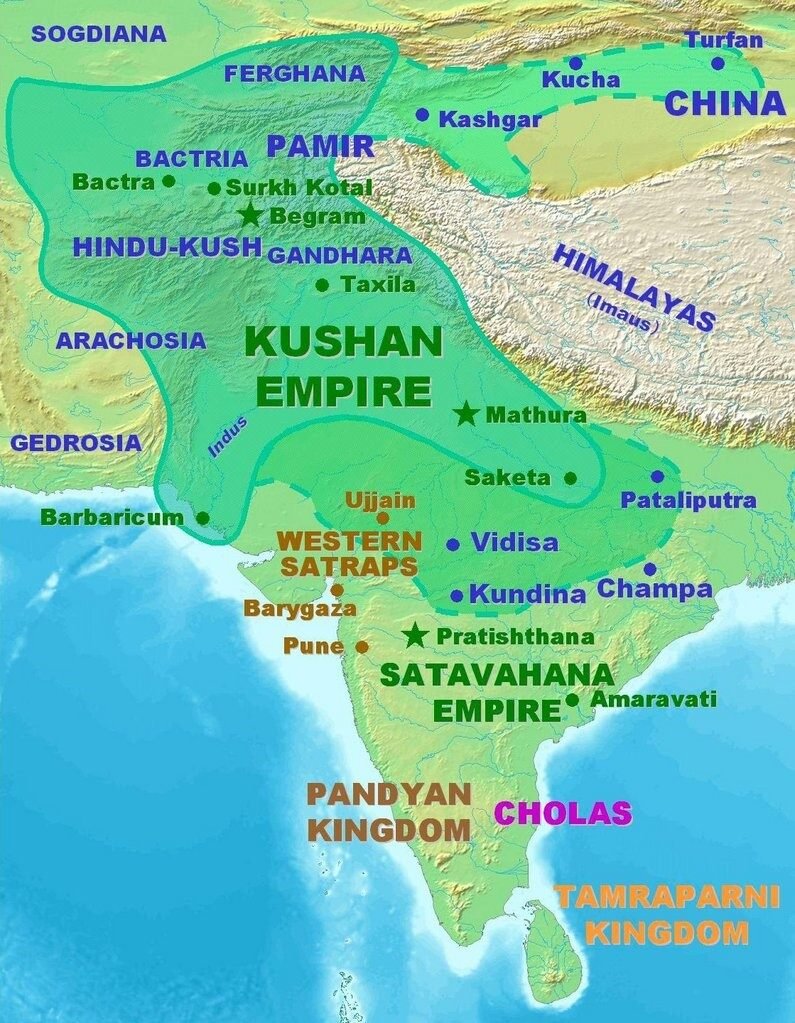
Kanishka was a great patron of Buddhism, and his reign saw the flourishing of Gandhara art, which depicted both Buddhist and Hindu deities. The syncretism of cultures during the Kushan period left a profound impact on the region’s religious and artistic heritage.
The Kushan period was marked by a blend of Greco-Roman, Indian, and Persian cultural elements, creating a unique artistic and religious landscape. The Gandhara School of Art, which emerged during this time, produced some of the most iconic sculptures and reliefs, many of which depicted scenes from Hindu mythology alongside Buddhist themes.
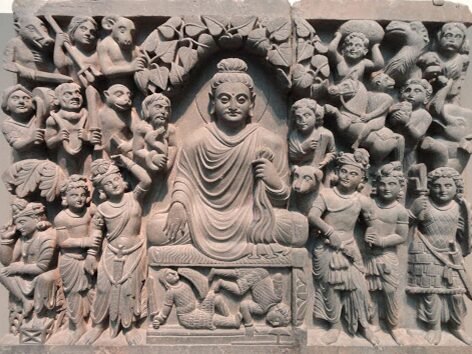
The Hephthalite Empire (5th to 6th Century CE)
The Hephthalite Empire, also known as the White Huns, controlled large parts of Central Asia, including Afghanistan. The Hephthalites are primarily known for their invasions of the Gupta Empire in India, but they also had a significant impact on the cultural landscape of Afghanistan. They practiced a mix of religions, including Hinduism, Buddhism, and Zoroastrianism, and their rule saw the continuation of the region’s syncretic traditions.
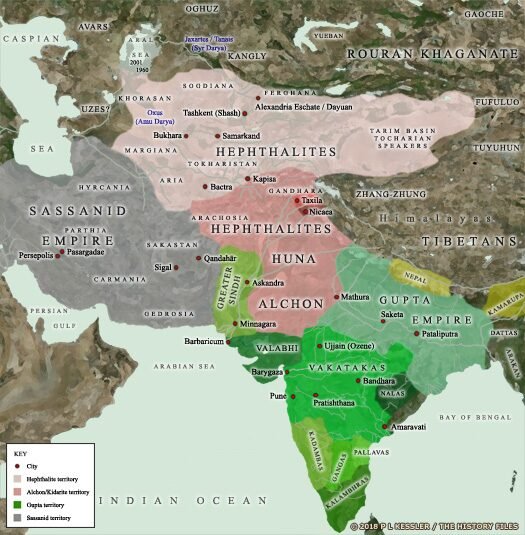
The Hephthalites were known for their distinctive style of governance, which incorporated elements of both nomadic and settled societies. They supported local religious institutions, including Hindu temples and Buddhist monasteries, and their patronage helped preserve the region’s cultural diversity during a period of significant political upheaval.
The Sassanian Empire (224-651 CE)
The Sassanian Empire, which succeeded the Achaemenids in Persia, also exerted control over parts of Afghanistan, particularly Bactria. While Zoroastrianism was the state religion, the Sassanians were relatively tolerant of other faiths, including Hinduism. The Sassanian period saw the continuation of trade and cultural exchanges along the Silk Road, further enriching the region’s diverse heritage.
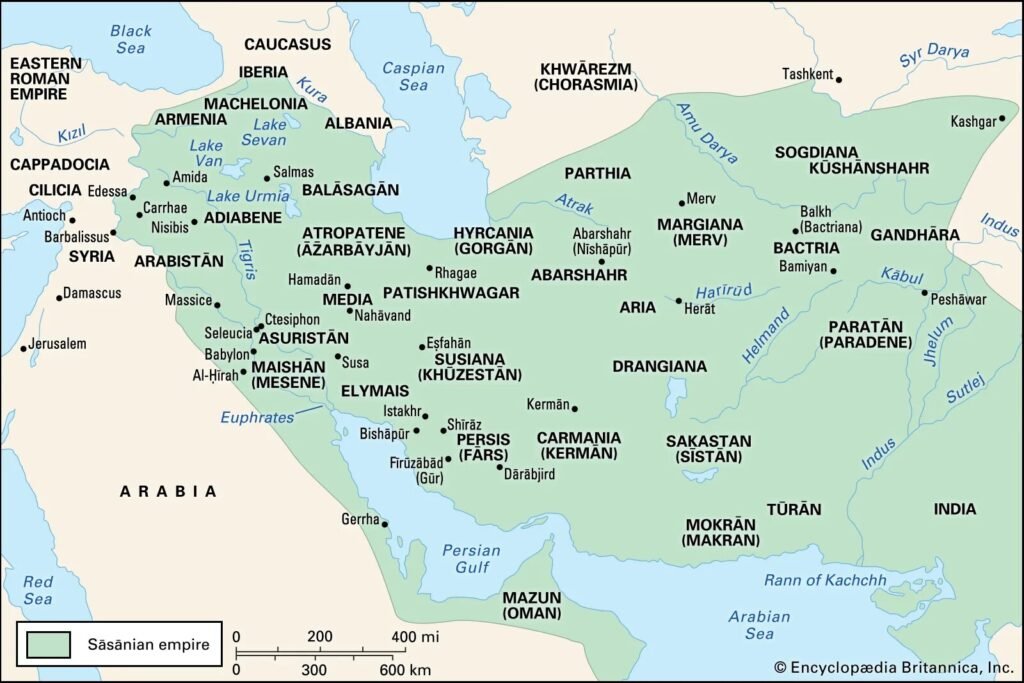
The Sassanian influence in Afghanistan was most evident in the realm of architecture and urban planning. Sassanian-style buildings, with their distinctive domes and arches, were constructed in major cities, and the region’s art an
Cultural and Religious Influence
Art and Architecture
The region’s unique position as a crossroads of civilizations is reflected in its art and architecture. Gandhara art, with its distinctive blend of Greco-Roman, Indian, and Persian elements, produced some of the most iconic Buddhist sculptures, which also depicted Hindu deities like Vishnu and Shiva. Temples, stupas, and monasteries from this period reveal the region’s deep spiritual and cultural connections with the Indian subcontinent.
The Gandhara School of Art, which emerged during the Kushan period, is particularly renowned for its intricate and lifelike sculptures. These works of art often depict scenes from Hindu mythology, such as the stories of Krishna, Vishnu, and Shiva, alongside Buddhist figures like the Buddha and Bodhisattvas.
The use of Greco-Roman artistic techniques, such as realistic drapery and facial expressions, gives these sculptures a unique aesthetic that sets them apart from other Indian art traditions.
Education and Philosophy
Afghanistan was home to several important centers of learning during this period. The region’s scholars were well-versed in Vedic literature, Buddhist teachings, and Persian philosophy. These intellectual exchanges contributed to the development of new ideas in religion, science, and the arts, which influenced cultures far beyond Afghanistan.
The region’s educational institutions, particularly those associated with Buddhist monasteries, were renowned for their rigorous curriculum and diverse student body. Scholars from across Asia traveled to Afghanistan to study subjects ranging from theology and philosophy to medicine and astronomy. The intellectual exchanges that took place in these centers of learning helped to shape the development of Buddhist philosophy, particularly the Mahayana tradition, which later spread to East Asia.
Religious Syncretism
One of the most remarkable aspects of pre-Islamic Afghanistan was its religious syncretism. Hinduism, Buddhism, Zoroastrianism, and later, early forms of Islam coexisted in relative harmony, with each tradition influencing the others. This syncretism is evident in the region’s art, architecture, and religious practices, where elements of different faiths were often blended together.
For example, many of the region’s temples and stupas were adorned with both Hindu and Buddhist imagery, reflecting the shared religious heritage of the local population. Similarly, religious festivals and rituals often incorporated elements from multiple traditions, creating a unique and vibrant spiritual culture that was unlike anything else in the ancient world.
The Decline of Hindu Kingdoms and the Rise of Islam
Islamic Conquests and the End of Hindu Rule
The advent of Islam in the 7th century CE marked a significant turning point in Afghanistan’s history. The Umayyad Caliphate began the process of Islamization, which was accelerated by subsequent invasions by the Ghaznavids and Ghurids. The fall of the Hindu Shahi dynasty in the 11th century marked the end of Hindu political power in the region.
The Ghaznavid ruler Mahmud of Ghazni, known for his military campaigns in India, played a crucial role in the Islamization of Afghanistan. His conquests led to the destruction of many Hindu temples and the forced conversion of local populations to Islam. The Hindu Shahi dynasty, which had resisted Islamic invasions for centuries, was finally defeated, and the region became predominantly Islamic.
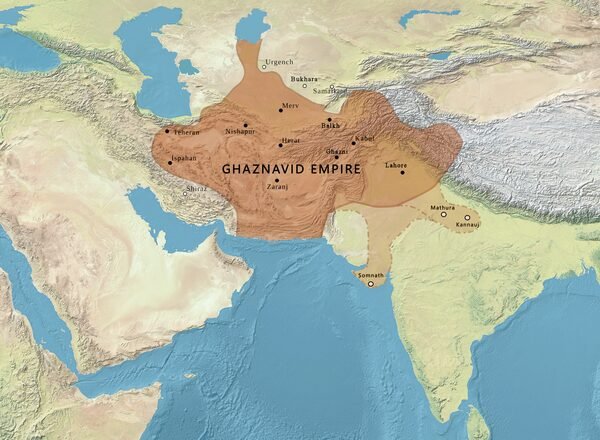
Despite the dominance of Islam, the cultural and religious influences of the Hindu and Buddhist periods persisted in local traditions, art, and architecture. Elements of these ancient religions can still be seen in the region’s cultural practices and archaeological remains.
Cultural Assimilation and Legacy
The fall of the Hindu kingdoms did not erase the region’s rich cultural and religious heritage. Many local traditions, art forms, and architectural styles continued to reflect the influence of Hinduism and Buddhism, even as Islam became the dominant religion.
For example, the Bamiyan Buddhas, which stood for over a thousand years before being destroyed by the Taliban in 2001, were a testament to the region’s Buddhist past. Similarly, the remains of Hindu temples and monasteries, such as those found in the cities of Kabul and Ghazni, provide evidence of the region’s diverse religious history.
The cultural assimilation that took place in Afghanistan during the Islamic period was not a one-way process. While many local traditions were influenced by Islam, the region also contributed to the development of Islamic art, architecture, and philosophy. This blending of cultures created a unique and enduring legacy that continues to shape Afghanistan’s identity to this day.
Archaeological Sites
The archaeological sites of pre-Islamic Afghanistan offer invaluable insights into the region’s Hindu and Buddhist past. Sites such as Hadda, Bamiyan, and the remains of the Shahi capitals in Kabul and Peshawar provide a window into Afghanistan’s pre-Islamic history. These sites, with their temples, stupas, and monasteries, are crucial for understanding the region’s historical connections with Hinduism and Buddhism.
Hadda, located near the modern city of Jalalabad, was once a major center of Buddhist learning and art. The site is home to numerous stupas and monasteries, as well as a vast collection of sculptures that depict scenes from Hindu and Buddhist mythology. These sculptures, many of which are now housed in museums around the world, provide a vivid glimpse into the region’s artistic and religious heritage.
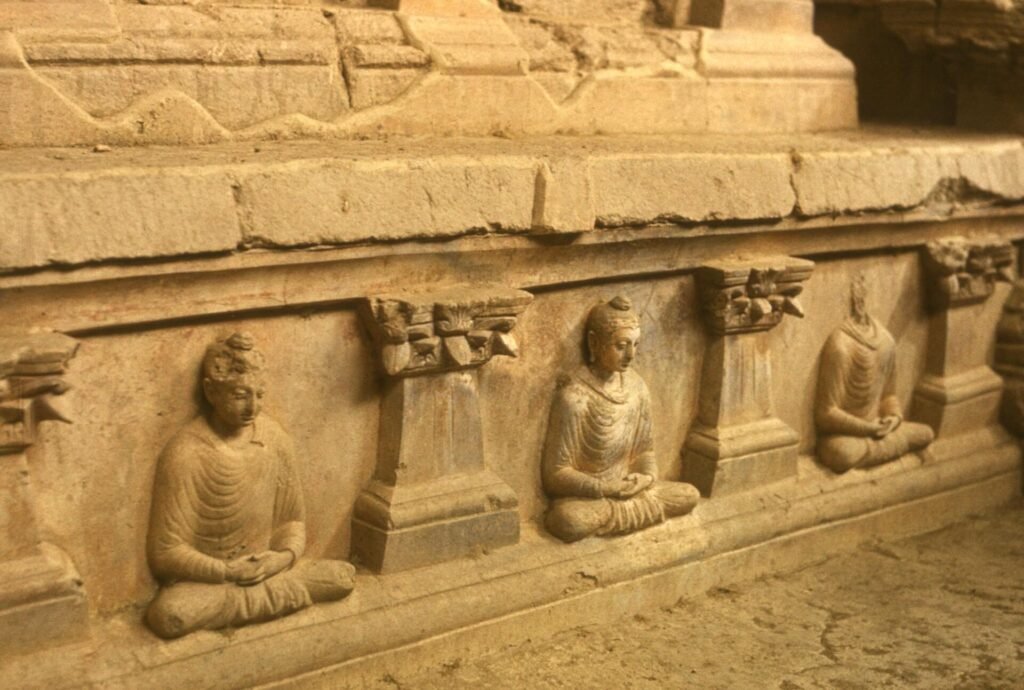
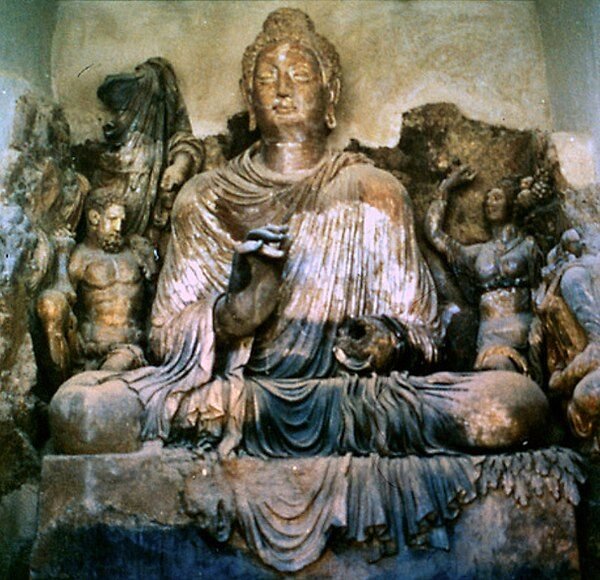
Bamiyan, famous for its towering Buddha statues, was another important center of Buddhist worship and learning. The site was also home to a number of Hindu temples and shrines, reflecting the region’s diverse religious landscape. Although much of the site was destroyed during the Taliban’s rule, ongoing archaeological efforts continue to uncover new evidence of the region’s pre-Islamic past.
The Enduring Legacy of Pre-Islamic Afghanistan
The history of Hindu kingdoms and other empires in modern-day Afghanistan reveals a region that was once a vibrant center of cultural, religious, and political activity. These ancient civilizations played a crucial role in shaping the region’s identity, leaving behind a rich history of art, literature, and religious practices that continue to influence the region today.
The legacies of these ancient civilizations are not just confined to the pages of history books; they are woven into the fabric of Afghanistan’s cultural heritage. By understanding and preserving this heritage, we can gain a deeper appreciation for the region’s diverse and pluralistic past, and help to ensure that the contributions of these ancient civilizations are not forgotten.

